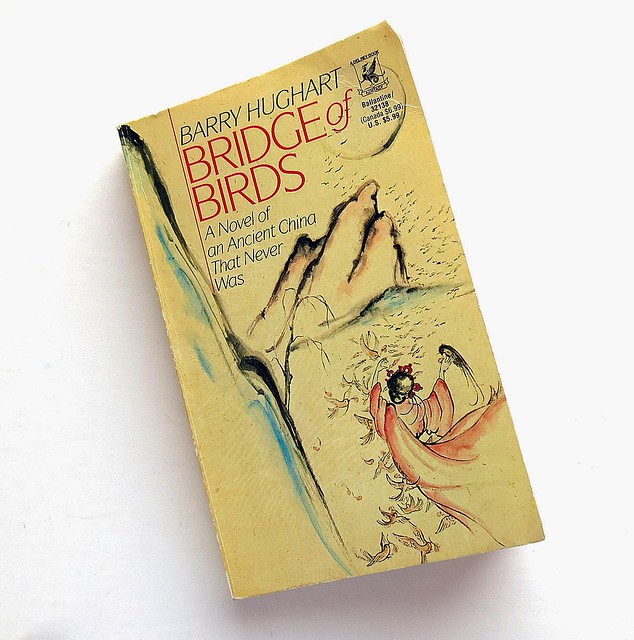
Although the two books are very different, I've enjoyed them both immensely. Bridge of Birds is the first book in a series about Master Li and Number Ten Ox, and it's in the style of a classical Chinese novel. It reads like a fairy tale, with overlapping and repeating narrative threads that diverge and come together to create a very satisfying tapestry. I'm really looking forward to grabbing the omnibus edition next time I'm at the library, because one story at a time is just not enough with these guys.
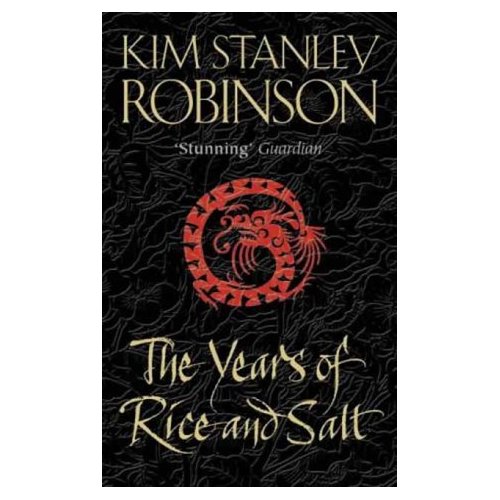
I picked up The Years of Rice and Salt because I was looking for a good alternate history book, and this one was recommended as a good place to start. And really, it is fantastic. It posits a world in which a second wave of the plague wipes out 99% of the population of Europe, leaving China and Dar al-Islam (a union of Islamic states) to become the dominant powers in the world. It covers nearly a millennium of history using a clever device of reincarnation; a clan, or jati, of six souls are reincarnated together several times over the course of the novel, with each of their names always starting with the same letter. While in the bardo, or afterlife, they reflect on their faults or what they might have done differently in order to create a better world. Not all of the chapters are set in China, but some of my favorite ones are, and I found it really fascinating to consider what the world might have been like if the East had become the dominant power in the world, rather than the West.
In keeping my promise to myself to pick up more great accessories, I'm taking a look at Chinese and Chinese-inspired vintage jewelry and accessories.
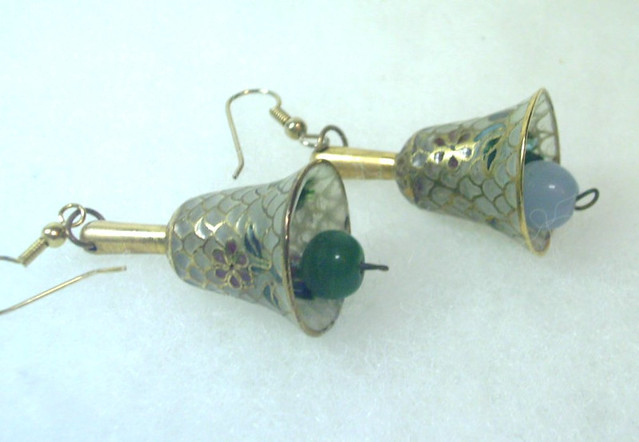
Vintage Chinese Plique a Jour Cloisonne Bell Earrings
My ears are stretched, so I don't usually wear normal earrings, but I think I would have to make an exception for these delicate bell earrings.
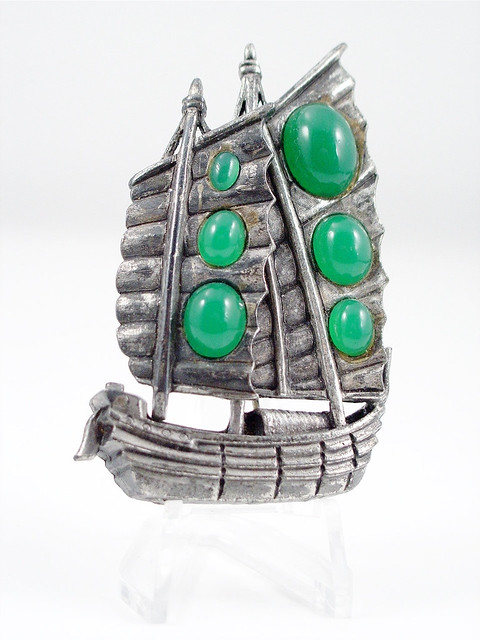
Art Deco Chinese Junk Brooch
While I do already have one brooch in the shape of a boat (a beautiful little piece that I got from the Chronically Vintage Etsy shop), I wouldn't say no to one more. Or several more, since collecting things is fun.
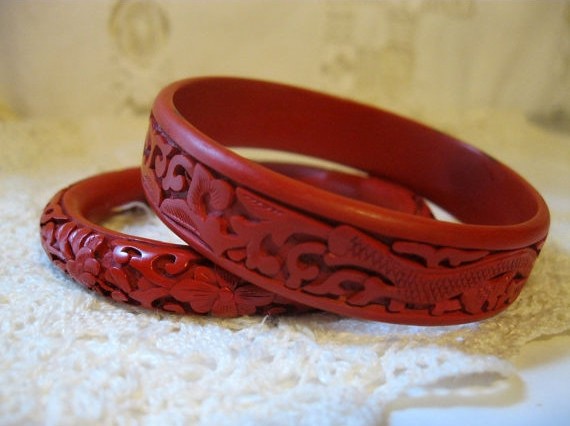
Chinese Carved Cinnabar Bangles
Aren't these bangles lovely? Unfortunately I don't think they'll fit me (fun fact - I have really big hands), but they are on sale is someone else wants to snap them up.
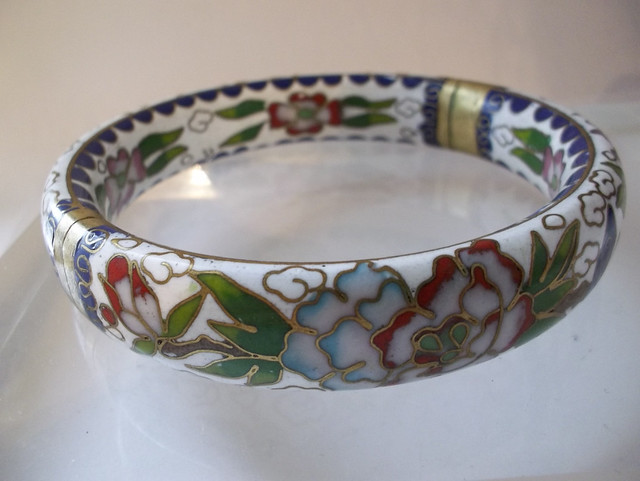
Chinese Cloisonne Bangle
This one is also probably a bit small for me, but SO PRETTY. I seem to be developing a fondness for Chinese enamelwork.
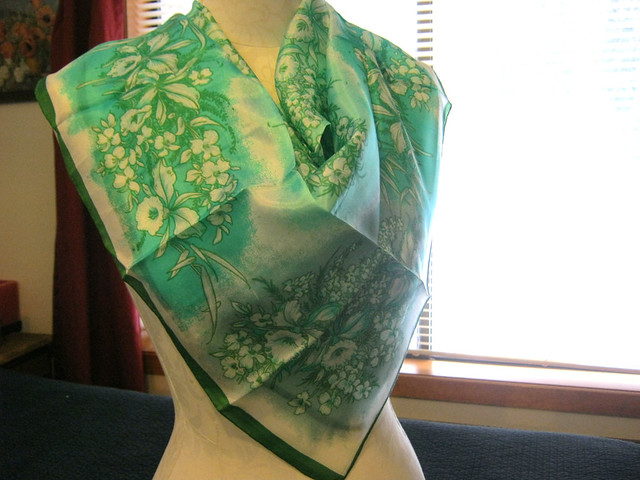
Green and White Floral Silk Scarf
This green and white silk scarf would be the perfect accessory to lived up a solid dress.
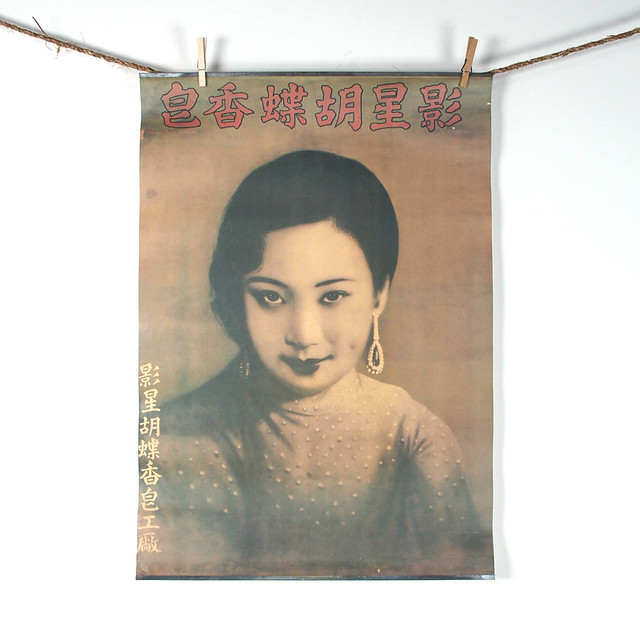
1930s Chinese Movie Star Poster
This poster of 1930s Chinese film star Hu Die (translation: Butterfly) would make a gorgeous addition to anyone's collection of classic pinups. Reading about her is making me want to explore Chinese cinema of the era.
Ok, I've got a couple of notes about cultural appropriation.
I think respect is really important when it comes to interacting with other cultures. I've always been interested in Chinese history, because it is absolutely epic in scope. They had almost two thousand years of history to look back on when the Romans were founding their empire, and they were undoubtedly the greatest, most technologically advanced culture in the world up until almost the 17th century. It really is just a fluke of history European powers came to dominate the world rather than China.
Although I would love to own a cheongsam, I don't know that I would ever feel comfortable wearing one, because the line between respectfully wearing a traditional piece and appropriation isn't entirely clear. On the one hand, you've got the stuff that's obviously wrong - wearing bindis and war bonnets to Coachella - and one the other hand, you've got stuff that's even the strictest progressive probably wouldn't ding you for - wearing a jade bracelet that you purchased from a Chinese craftsperson. Traditional dress falls in a gray area that makes me kind of uneasy. Even if you're not venturing into bad Halloween costume territory, with a bad polyester dress and a conical hat, there's still a whiff of exoticism around wearing traditional dress from a culture that's not your own. If a Chinese woman couldn't wear it comfortably, without dealing with questions or stares or harassment, should I?
Of course, I may be overthinking all of this, but I do want to be conscientious about how I treat other people, and that includes how I interact with their culture.

No comments:
Post a Comment